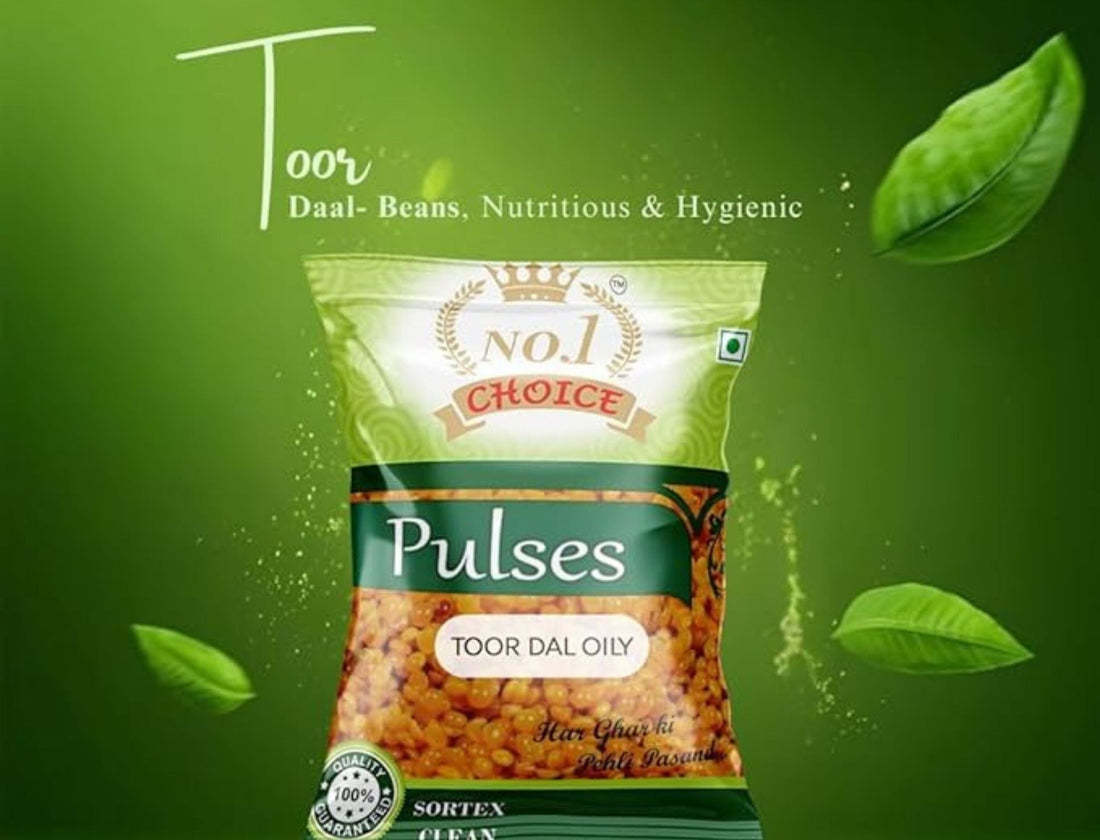
Toor Dal: The Pulse of Indian Kitchens in the Monsoon Season
Share
Introduction
As the rains grace the Indian subcontinent, bringing relief from the scorching summer heat, our kitchens transform too. In this beautiful monsoon rhythm, one humble ingredient takes center stage in countless Indian homes — Toor Dal. Also known as Arhar Dal or Pigeon Pea, this golden pulse is more than just a staple. It’s a comfort food, a tradition, and a source of wholesome nourishment.
Why Monsoon is the Perfect Season for Toor Dal
During the monsoon, our bodies naturally crave warm, light, and easily digestible foods. Toor dal fits this seasonal requirement perfectly:
-
✅ Light on the stomach
-
✅ High in plant-based protein
-
✅ Supports digestion
-
✅ Boosts energy without making you feel heavy
Monsoon often brings a dip in immunity and appetite due to humidity and waterborne illnesses. Toor dal is rich in iron, folate, potassium, and fiber — helping your body stay strong and balanced during this sensitive season.
A Taste of Tradition: How India Cooks Toor Dal
From Gujarati dal to Maharashtrian amti, and from South Indian sambhar to North Indian tadka dal, every region of India celebrates toor dal in its own flavorful way.
Popular Toor Dal Recipes During Monsoon:
-
Dal Tadka: Smoky, spiced, and comforting — the ultimate rainy-day dish with steamed rice.
-
Sambhar: A tangy, spicy lentil stew loaded with seasonal vegetables.
-
Khichdi: Soft, mildly spiced rice-lentil porridge that warms the soul.
-
Dal Dhokli: A one-pot Gujarati meal where spiced wheat dumplings swim in toor dal curry.
Whether you pair it with rotis, rice, or ghee-drizzled jeera rice, the richness of toor dal complements every Indian meal.
Health Benefits of Toor Dal in Monsoon
The changing weather can often lead to bloating, indigestion, and fatigue. Toor dal helps counter these effects naturally.
🌿 Key Benefits:
-
Rich in Protein: Supports tissue repair and builds immunity.
-
High in Fiber: Aids digestion and keeps your gut healthy.
-
Folate & Iron: Boosts red blood cell production — helpful during damp weather.
-
Low Glycemic Index: Keeps blood sugar levels stable.
-
Anti-inflammatory Properties: Helps with joint stiffness common in damp conditions.
Sourcing the Right Toor Dal
Not all dals are created equal. In the monsoon, it’s essential to choose naturally grown, chemical-free toor dal that retains its flavor and nutrients.
Look for:
-
✅ Uniform size and color
-
✅ No artificial polish
-
✅ Fresh, earthy aroma
-
✅ Organically or traditionally grown sources
A good dal should not just nourish the body but also reflect purity in its origin.
Storage Tips for Monsoon
Moisture can spoil lentils quickly. Here’s how to keep your toor dal fresh during rainy days:
-
Store in an airtight glass or steel container
-
Add a few dried bay leaves or neem leaves to deter bugs
-
Keep in a cool, dry place away from direct humidity
-
Use within 2-3 months for best taste and nutrition
Final Thoughts
Toor dal isn’t just a monsoon must-have — it’s a celebration of comfort, nourishment, and tradition. As thunder rolls in and the scent of wet earth fills the air, there's nothing quite like a steaming bowl of dal and rice to warm the heart.
This season, embrace the goodness of Toor Dal — not just as food, but as a soulful experience that connects generations and kitchens across India.
